Ralph C. Budd
Jay Chadwick
Sarah Cole
Alex J. Cross
Christopher Dazey
Joseph Faryniarz
Paul L. Finger
Nathanael France
Bill Geraci
Trevor Good
Aleah Harvey
Shoko Hosono
Hiromi Inomata
Vernon Kimbro
Deborah S. King
Marisa J. Landsverk
Christopher S. Lanier
Mary Catherine Levri
Timothy Ludwig
Kathy Rissa Moore
Elizabeth Patterson
Jamie Pfauth
Jacob Donald Pfund
George Tomas Roberts-Oakland
Tedd Roseberry
Mr. Robert Sacks
Brian Sanders
Mr. Ian B. Sell
William Smiley
David N. Stamos
Catherine W. Tyng
Janice M. Vetter
Ryan Villapiano
Christine Wilhelm
Zachary L. Wolff
AGOYO News
AGO Member Jan Kraybill Nominated for Three Grammy Awards
Jan Kraybill writes: I was absolutely thrilled that my most recent album, the second solo recording on the Kauffman Center’s Julia Irene Kauffman Casavant organ, has been nominated for three GRAMMY awards, including Best Classical Instrumental Solo, a very high honor indeed. That category, listing all five nominees, is below. It’s absolutely amazing to be included in this list of talented people!
As far as I know, I am only the third organist— and the first female organist— to be nominated for a solo recording GRAMMY.
The Nominee for Best Classical Instrumental Solo were:
(Award to the Instrumental Soloist(s) and to the Conductor when applicable.)
THE BERLIN RECITAL
Yuja Wang
HIGDON: HARP CONCERTO
Yolanda Kondonassis; Ward Stare, conductor (The Rochester Philharmonic Orchestra)
MARSALIS: VIOLIN CONCERTO; FIDDLE DANCE SUITE
Nicola Benedetti; Cristian Măcelaru, conductor (Philadelphia Orchestra)
THE ORCHESTRAL ORGAN
Jan Kraybill
TORKE: SKY, CONCERTO FOR VIOLIN
Tessa Lark; David Alan Miller, conductor (Albany Symphony)
The full article can be found here: https://www.wsj.com/articles/how-about-a-little-pipe-music-at-geffen-hall-11576534578 (Subscription required.)
January 2020 TAO Feature Article
Christ and St. Luke’s
Episcopal Church
Norfolk, Virginia
Casavant Opus 2734,
Renovated by Foley-Baker Inc.
Stop List
by Mike Foley

Christ and St. Luke’s Episcopal Church has long been noted for its music. In 2012, Kevin Kwan became the director of music and organist and in just a few years lifted the program to yet new heights. The church opened in 1910 with a 50-rank Austin which, after a massive fire, was replaced with a replica instrument. This organ fell victim to water and wear over time and was replaced in 1963 with Casavant’s 68-rank Opus 2734. At the time, it was a fine example of America’s mid-century outlook on tonal design. However, as with so many other churches, the ever-changing ear of the organ world did not pass by Christ and St. Luke’s, and within 20 years after the organ’s installation, conversations started about tonal changes and additions. The ensuing years saw both happen and, in time, the chambers reached the point that all the added equipment hindered service access or tonal egress; in some places, both.
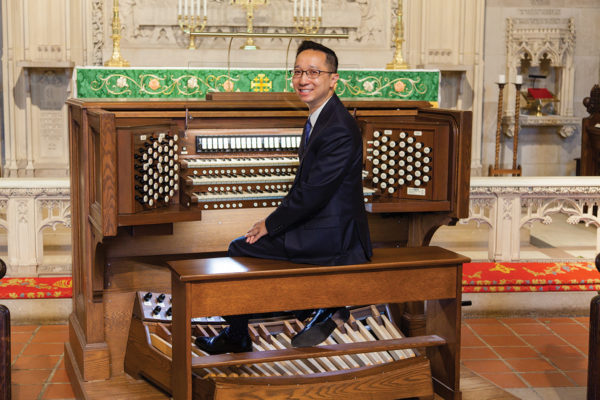
In the meantime, Kevin’s music program continued to grow, but the organ wasn’t keeping up. Despite all the additions to the organ, the Great remained the only manual division with a complete chorus. Reeds were mostly dead length and, not surprisingly, often out of tune or regulation. In places, the equipment was so crowded that portions of the same stop were split between the north and south chambers. Metal fatigue was taking a toll on some of the added basses, and the overall ensembles had become confused by various tonal endeavors. A fundamental and rather serious problem haunting service work was that since 1910 the north chambers could be reached only by carrying in and erecting a 20′ extension ladder in the chancel. Getting the lofty ceiling hatch open and then the ladder finally placed required fully two trips heavenward. This didn’t encourage service work and certainly not return trips for that one out-of-tune pipe.
In 2013, organbuilder Bynum Petty was called in for an overall assessment. We were also asked to survey. Using information from these assessments and armed with all he could gather on the organ’s status and background, Kevin brought everything to the church, which then decided to fix things once and for all. We were awarded the contract, and in 2018 removed every piece of the instrument to our Connecticut shops.
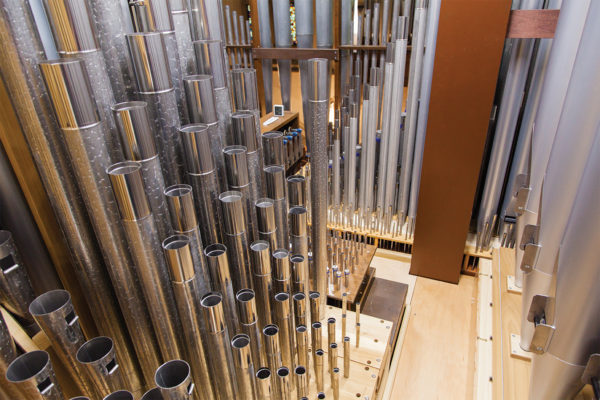
Bringing the organ’s tonal palette into the 21st century and making the revised instrument fit required some new manual and offset chests as well as physically expanding both chamber spaces. Temperature (pitch) drift plagued the chambers. Therefore, besides gutting and then insulating the outside walls, a multichamber air-motion system was designed and installed. Modern-day maintenance costs demanded an organ that would be as leather-free as practical. Therefore, slider chests replaced leather-heavy pitmans. Built-in and more pressure-sensitive schwimmers replaced a small sea of standard bellows-like reservoirs. Seamless expression now occurs with electric swell engines by Organ Supply Industries (OSI). Although some of its stops were reused, the Positiv division went away, and the organ became far more manageable with the usual four divisions.

The new Swell and Choir manual chests made for the best possible layout of these divisions, and with a wash of new LED lighting, chambers are far more service friendly. In places, they border on spacious, with 14″ walk boards that span important tuning places. Capping everything is the new, custom-designed electric ladder that, with the touch of a button, sees the ceiling hatch open and the north chamber access ladder descend to the chancel floor. Access is now effortless, safe, and fast.
Tonal renewal saw every pipe closely inspected. Our in-depth repair and revoicing made it possible to retain and reuse nearly 70 percent of the pipes. Questionable reed stops were replaced with ones that are tuning stable and right for the new organ. Good but buried stops, such as the 32′ Bombarde, were totally reconditioned and relocated to a new Pedal chamber in which the 32′ Bourdon pipes now line the back wall. Casavant’s seasoned building techniques made it possible to easily remove the damaged upper lips of these pipes for repair and reshaping. New blowers would meet the needs of added stops and increased pressures. The accompanying stoplist illustrates how the revised organ was achieved.
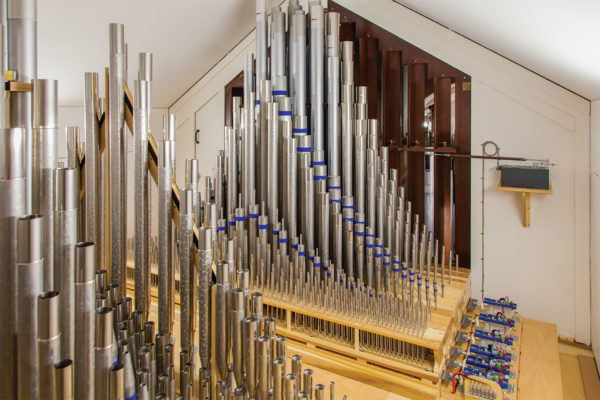
The console had been the product of an early electronic switching conversion, the displays of which crowded the coupler rail with readouts for every feature. The natural wood piston buttons were hard to read. A new electronic relay system and all-new pistons eliminated both problems. Manuals and pedals were reconditioned and regulated. New jambs made for better knob layout.
Much time was spent laying out the chambers. The new manual chests were built by OSI, and working together, our combined CAD departments found ever-improved ways to comfortably fit what would still be a large organ.
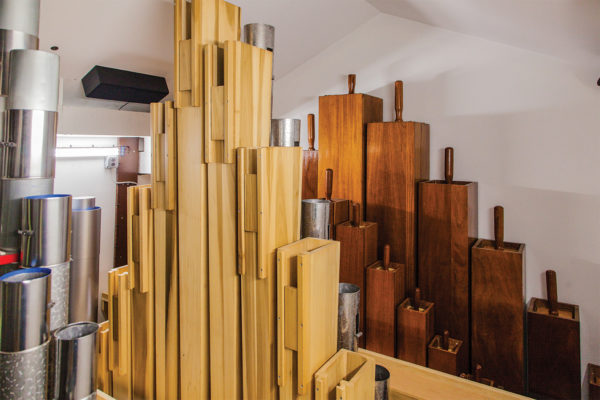
The project has come together well. We’re known for renovating and rebuilding pipe organs. As such, we’re necessarily Monday morning quarterbacks, and we get a real chance to fix a deserving instrument’s issues, be they physical or tonal. We get to give organs a second chance, and this is very satisfying for both the client and us. The “new” Christ and St. Luke’s organ reflects this: Diapasons/Principals in every division; a wonderful complement of interesting flutes; choruses that climax beautifully with mixtures and reeds; solo sounds for every occasion; celestes of every character and swell shades that nearly silence them. Reeds of most every power and character sound great and hold tune. The Pedal division sounds as good as the specification looks. Void of holes in its tonal fabric, it can both purr and thunder. This organ is now musically satisfying and very serviceable. It uses a reasonable minimum of leather. The console is both state of the art and comfortable. The chassis is quiet at idle.
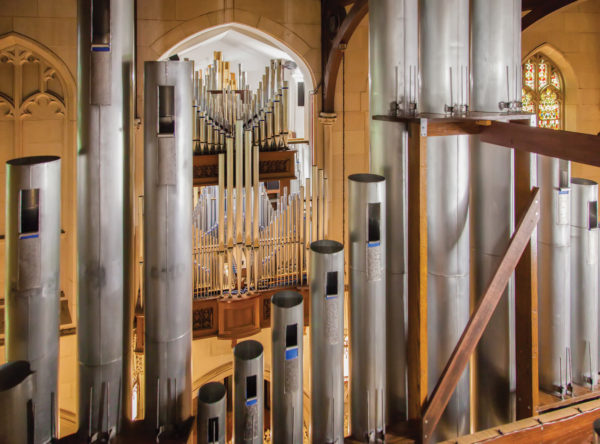
Like so many, this job was filled with challenges, and we take this moment to thank the staff at Christ and St. Luke’s, especially Kevin Kwan, who went out of their way to be sure the on-site working conditions were as good as could be.
Like airplanes and yachts, pipe organs are not inexpensive; however, renovations such as this cost noticeably less than a like-kind, new instrument and, done right, will last just as long.
Mike Foley is president of Foley-Baker Inc.
Website
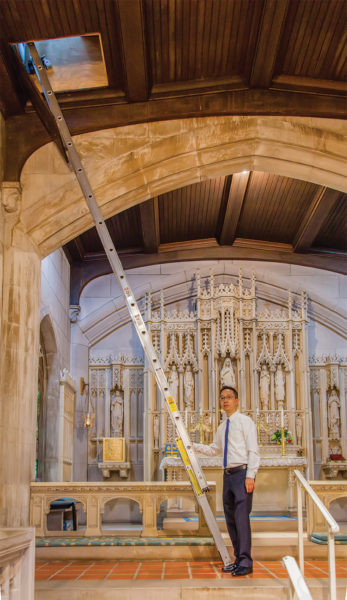
Beware the Scammers
Scammers are everywhere and AGO chapter leaders need to be vigilant about requests for funds.
AGO Executive Director James Thomashower recently wrote a column in TAO on scams and how to protect yourself and your chapter funds.
Please read and share with your fellow chapter officers and members:
AGO 2020 National Convention in Atlanta Has Been Cancelled
The National Council, the Committee for Conventions, and the Convention Steering Committee for the Atlanta Chapter of the American Guild of Organists regret to announce the cancellation of the AGO 2020 National Convention. The uncertanties surrounding the spread of the coronavirus required us to take this action. We could not guarantee the health and well-being of registrants, performers, presenters, exhibitors, worship leaders, and all others who would have been involved in the convention.
We are deeply saddened at having to make this decision, but we feel it is in the best interest of all AGO members, their families, friends, and colleagues.
The convention website will remain in place for reference purposes for the time being.
AGO Monograph Series
Volumes 1-3 of Michael Barone’s Monograph Series are available for sale through the AGO store.
Volume 1: J. Michael Barone and Pipedreams: The Organ and Public Radio.
Volume 2: The Organ on Campus
Volume 3: The Making of a Virtuoso Organist


